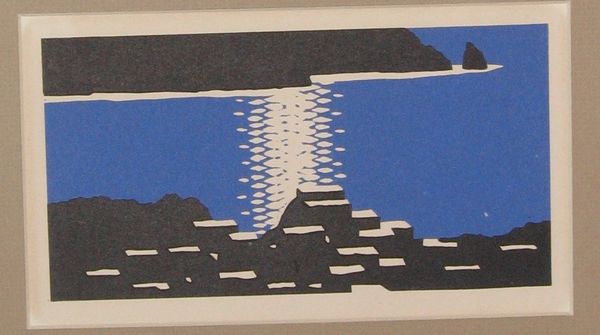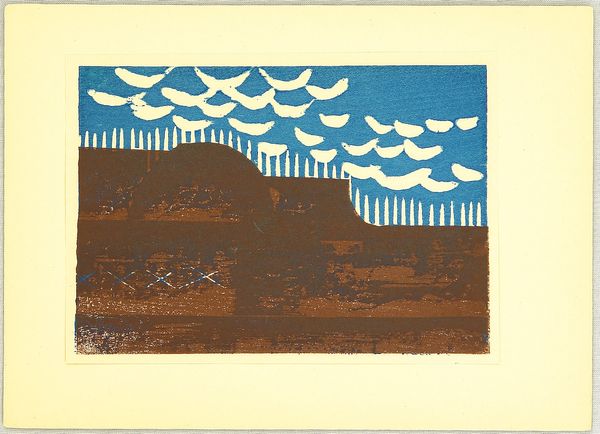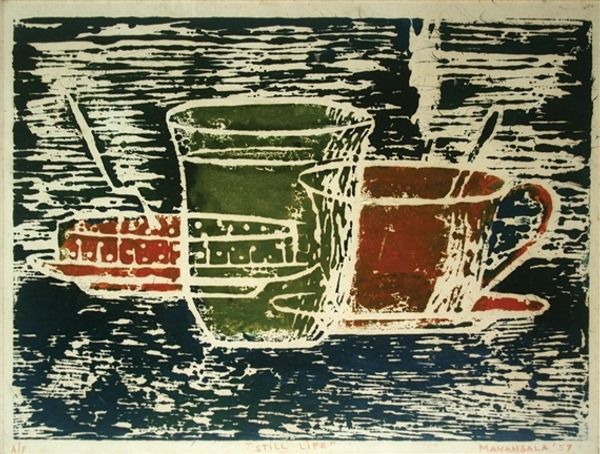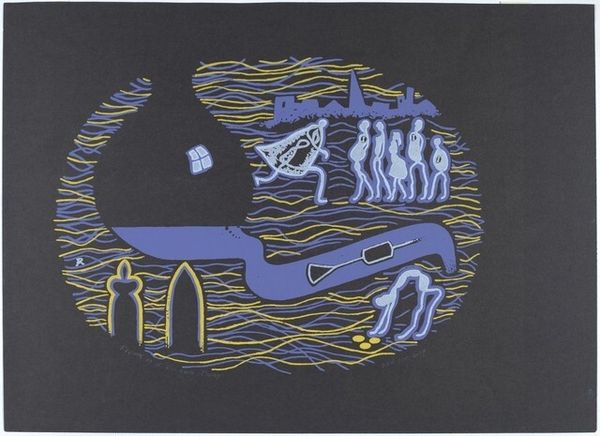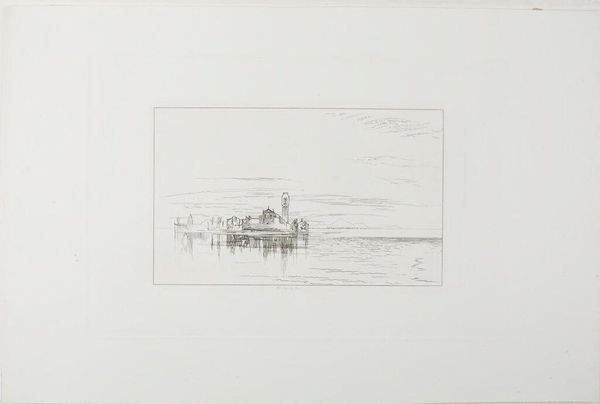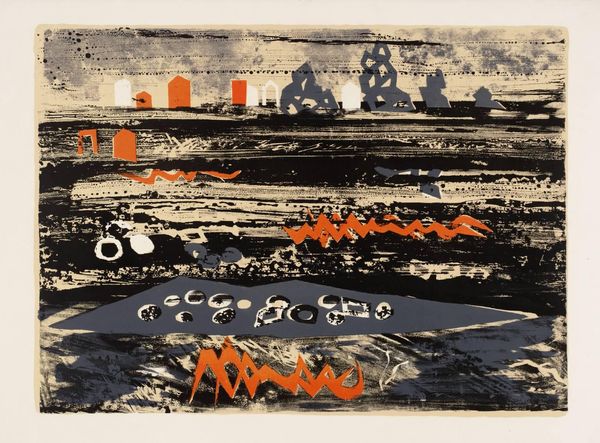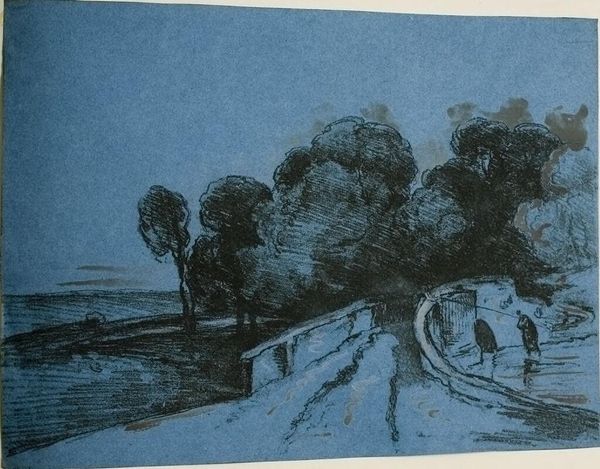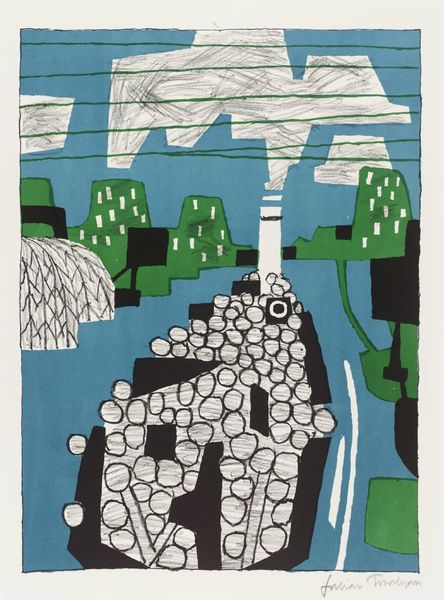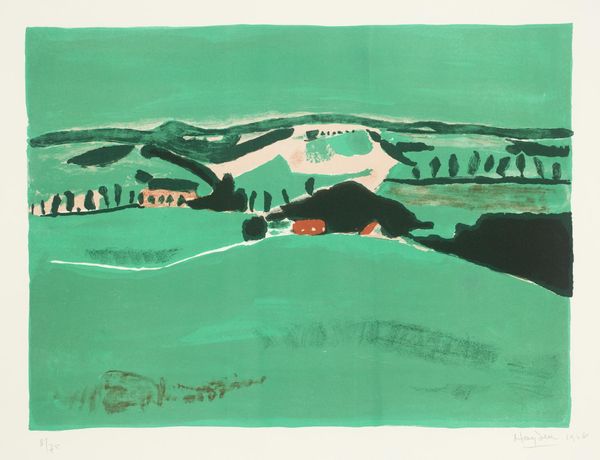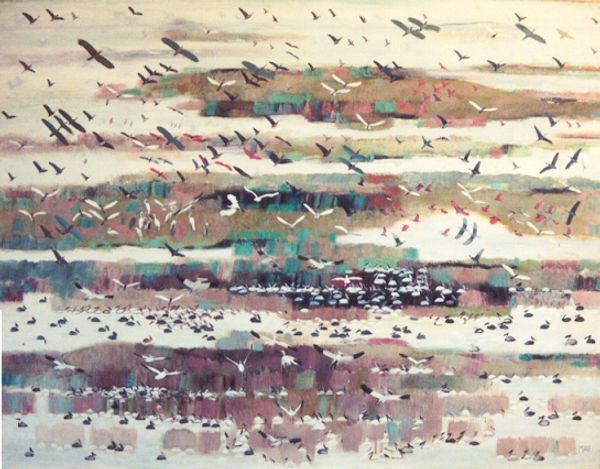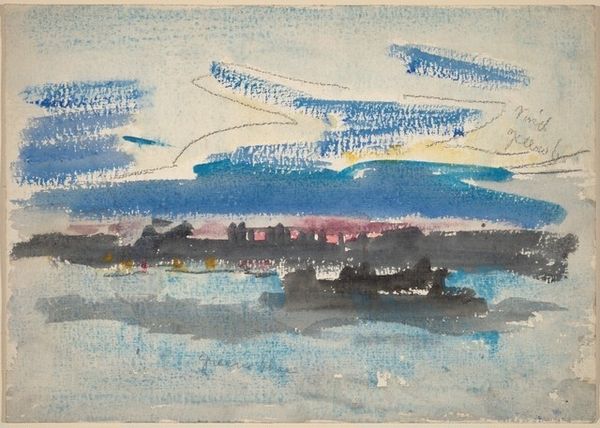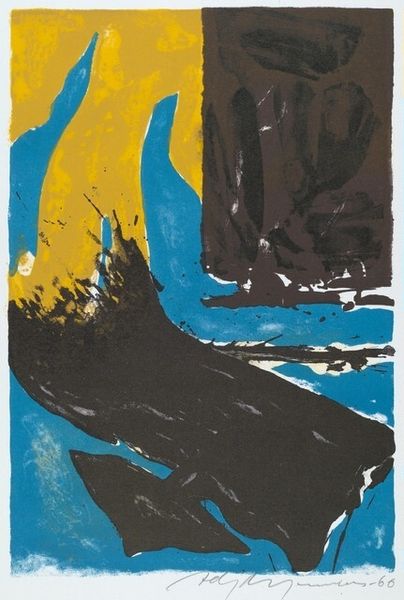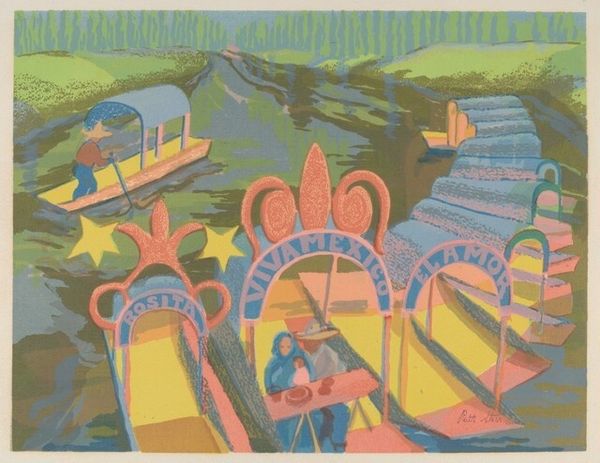
Illustration to the collection of poems by M. Bazhan 'Legacy' 1978
0:00
0:00
hryhoriihavrylenko
Private Collection
graphic-art, print
#
graphic-art
#
negative space
# print
#
landscape
#
naive art
#
modernism
Copyright: Hryhorii Havrylenko,Fair Use
Curator: This is Hryhorii Havrylenko’s "Illustration to the collection of poems by M. Bazhan 'Legacy'," a graphic art print from 1978. Editor: My initial reaction is serenity, almost melancholy. The blue and black color palette is very striking, creating a sense of calm, yet there’s also an undercurrent of starkness, maybe even foreboding. Curator: That contrast speaks to the political context in which Havrylenko was creating. The landscape imagery—almost a naive, idealized portrayal—clashes with the reality of Soviet censorship. The "legacy" referenced in the title, tied to the work of Mykola Bazhan, implies a direct confrontation with the past, with cultural and historical memories suppressed under the regime. Editor: I see that echoed in the simple, almost archetypal imagery. The water, the silhouette of trees, the architectural structure in the distance - are these cultural memory made visual? Curator: Precisely! Consider how water, throughout different periods, carries strong associations with cleansing, memory, even a gateway to the underworld. The stylized architectural landmark perhaps becomes an emblem of the intellectual heritage Bazhan and Havrylenko seek to preserve. Editor: It’s fascinating how these stark, bold forms carry so much meaning. Even the negative space—the bare parts of the paper—seems significant, perhaps a deliberate void representing lost or unspoken aspects of this "legacy." It reads like a statement on Ukrainian identity under political pressure. Curator: Indeed, we need to consider Havrylenko’s choice to depict an easily readable landscape using the graphic-art print, a more accessible, democratic form of art. It is a political statement in itself, as is the creation of Ukrainian art within the Soviet Union, with the work of Bazhan, who was a contested figure, as context. Editor: So the aesthetic simplicity becomes a subversive tool, allowing the work to subtly circumvent ideological barriers. I can almost hear echoes of resistance embedded in these blue and black shapes. I came to this artwork feeling melancholy, and now feel more thoughtful. Curator: Yes, and by focusing on art created on the margins, such as graphic works, we learn a lot about resistance and preserving cultural memory.
Comments
No comments
Be the first to comment and join the conversation on the ultimate creative platform.
